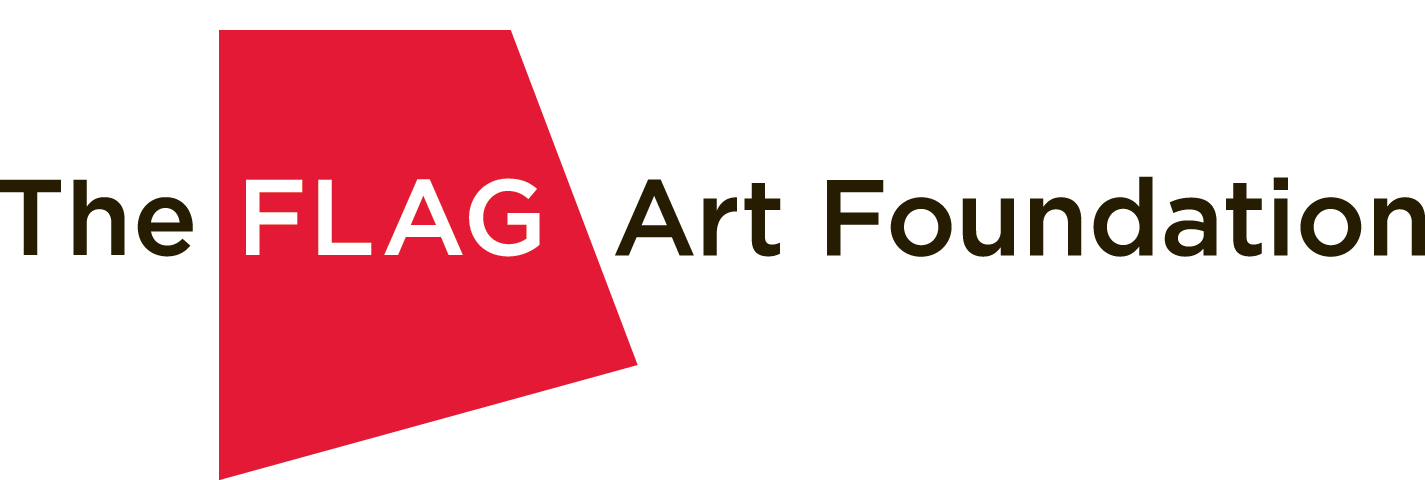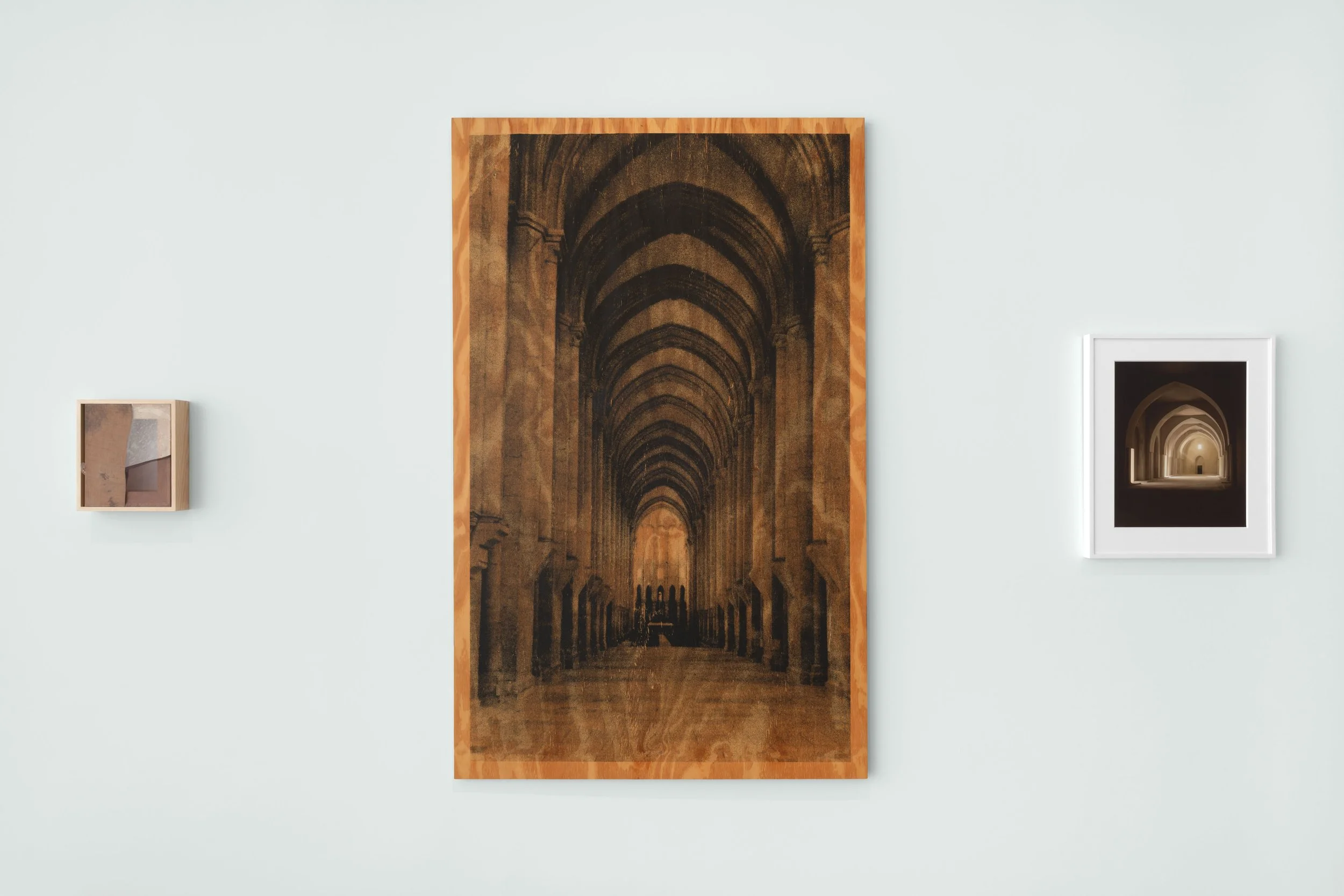As Above, So Below
SEPTEMBER 18, 2025-JANUARY 17, 2026
Click here for the checklist.
The FLAG Art Foundation is pleased to present As Above, So Below, a group exhibition amassing artworks and ritual objects to explore frameworks of faith, uncertainty, death, remembrance, and transcendence. Looking at the physical structure of religious forms such as altar pieces, icons, and reliquaries, the exhibition asks—in the broadest sense—how and to what end we ascribe meaning to both everyday and extraordinary objects. By considering the myriad ways artists seek to invoke the transcendental through their materials, As Above, So Below considers whether by believing in certain objects, symbols, or rituals, we can bridge the astral and the divine, influence outcomes, and circumvent chance. Artists include Charles Avery, Stephan Balkenhol, Amy Bravo, Sophie Calle, Greg Carideo, CARO, James Casebere, Anne Collier, Ben Cowan, Charlotte Edey, Felix Gonzalez-Torres, Harry Gould Harvey IV, Arghavan Khosravi, Thomas Lanigan-Schmidt, Charles LeDray, Agosto Machado, Amalia Mesa-Bains, Matthew Alakaihu Miller, Chris Oh, Nicolas Party, Naudline Pierre, Ed Ruscha, Rose Salane, Lucas Samaras, Krista Louise Smith, Jeni Spota C., Martha Tuttle, Jeffrey Vallance, Suyi Xu, and Dustin Yellin.
The title of the exhibition is an allusion to the Emerald Tablet, an ancient, Hellenic text which suggests that what happens in the heavens is mirrored on earth and, to that end, if objects have meaning, so too may we. Featuring artworks from the 16th-century through to the present, As Above, So Below demonstrates how the familiar can continually be transformed into something radically new and sacred. A key theme is the process of estrangement, whereby the world and our relationship to it is challenged by aesthetic forms that offer new meanings and possibilities. While modern and contemporary art has often achieved this effect through the transmutation of everyday objects—from toilets to lightbulbs to soup cans—the history of religion reveals a similar emphasis on the transformation of space itself by way of architecture and items of devotion.
In Amy Bravo’s A Curio (2022) the reliquary form is reimagined as a deeply personal method of display, with Bravo filling the recesses with trinkets and found objects that suggest relative meaning related to her Cuban and Italian familial lineages, while also being elevated by virtue of their display. Likewise, Agosto Machado’s Desire (Altar) (2024) uses the implied gravitas of the altar as a means for imbuing an array of objects with the weight of spiritual significance despite their commercial origins. A prominent actor, artist and Downtown personality, Machado would go on to create artworks that memorialized his friends who experienced the devastation and dehumanization of the AIDS crisis of the 1980s and 1990s. His work, presented alongside that of his friend, the artist and activist Thomas Lanigan-Schmidt, is both a personal and public marker of an almost lost queer community and sensibility.
The function of symbolic and metaphoric meaning—or of language and our awareness of it—is central to several works in the exhibition, those which attempt to replicate the transformative effect that a religious context can have on ordinary materials. In Charles LeDray’s Daisy Chain (2013-14) a delicate halo of flowers displayed on a piece of unfolded black fabric assumes new significance with the understanding that it is hand carved from human bone. The imposition of contextual meaning, along with the collision of the sacred and profane, is similarly expressed in Jeffrey Vallance’s Richard Nixon Grave Soil (Reliquary) (2009), in which the historical form of a reliquary is remade by the provocative assertion that it displays remnants from the 37th President’s burial site. Complicating our initial familiarity with the objects themselves, these works reflect not only on how meaning is expressed by materials, but also how the meaning of those materials is altered by unseen information.
Though many artists in the exhibition invoke the transcendental by elevating intimate objects, others, like Charles Avery, attempt to do so through elaborately made works that seek to transport the viewer elsewhere entirely. Avery creates an imagined space—replete with its own fictional universe and attendant meanings—as the conceptual structure for his sculpture Maquette for the Eternity Chamber, the Palace of the Gulls (2007). The nearly four-foot-tall chamber opens to reveal a multi-sensory and kaleidoscopic space infused with the mythology and symbolism of Avery’s epic project The Islanders, in which he describes the topology and cosmology of an imaginary island, where every detail from its geology to its inhabitants expresses a philosophical proposition, problem or solution. Avery’s byzantine creation—and his constructed world behind it—embodies the consistent belief running throughout in As Above, So Below, that devotion, spirituality and even cosmic connection can be found in a broken heel, a bronze jawbone, lost buttons, and just about anywhere else.
As Above, So Below is organized by The FLAG Art Foundation, which gratefully acknowledges the participating artists, artist estates, galleries, and private lenders, including Beth Rudin DeWoody, Priscila and Alvin Hudgins, Les Enluminures, Josef Vascowitz and Lisa Goodman, and others, for their generous loans of artworks to this exhibition.














